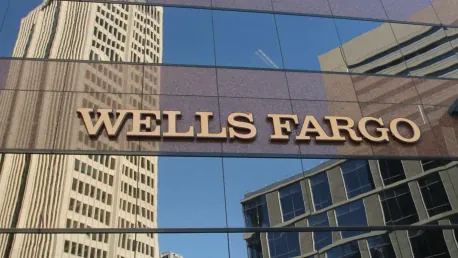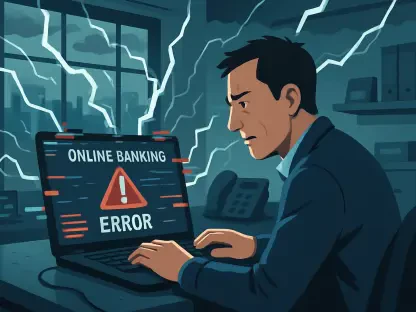Wells Fargo, one of the largest banks in the United States, has faced a series of regulatory scandals and compliance failures over the last several years. Since the 2016 fake accounts scandal, the bank has been under intense scrutiny from regulators and has struggled to rebuild its reputation and trust with consumers and investors. Recent enforcement actions by the Office of the Comptroller of the Currency (OCC) highlight the bank’s ongoing issues, particularly in its anti-money laundering (AML) controls. This article delves into the factors contributing to Wells Fargo’s persistent compliance problems and the challenges that lie ahead.
A History of Regulatory Failures
Wells Fargo’s history of compliance issues came to the forefront with the 2016 fake accounts scandal, where employees created millions of unauthorized accounts to meet sales targets. This scandal triggered a wave of regulatory penalties and a loss of consumer trust. The magnitude of the scandal resulted in billions of dollars in fines and stringent regulatory oversight, signaling a long-term impact on Wells Fargo’s operations.
The aftermath of the scandal saw ongoing compliance issues emerging in various areas of the bank’s operations. These included failures in risk management, poor governance practices, and lapses in consumer protection measures. Despite attempts to address these issues, the bank continued to face new regulatory challenges, further complicating its recovery efforts. Even after the departure of former executives and the appointment of new leadership, the bank has found it difficult to escape the shadow of its past misdeeds, indicating deep-rooted systemic problems that require more than surface-level fixes.
Recent OCC Findings
The OCC’s latest enforcement action centers on significant deficiencies in Wells Fargo’s AML controls, which are critical for preventing financial crimes such as money laundering. The agency noted severe shortcomings in the bank’s risk management practices, including handling of sanctions and other compliance-related tasks. Unlike previous actions, this time, the OCC has not imposed a fine but has mandated caution regarding expansion into new high-risk areas until substantial improvements are made.
This latest finding underscores that, despite efforts under CEO Charlie Scharf’s leadership, the bank still struggles with compliance. The OCC’s directive effectively restricts Wells Fargo’s growth, emphasizing the need for the bank to shore up its compliance mechanisms before undertaking new ventures. Scharf’s tenure, while marked by clear intentions to reform, has revealed the depth of the challenges that Wells Fargo faces. It is not just about fixing processes but also about changing a corporate culture that has long prioritized sales metrics over ethical compliance.
Persistent Challenges and Asset Cap
Wells Fargo’s repeated failures in meeting regulatory expectations have had long-term repercussions. One of the most significant penalties was the asset cap imposed by the Federal Reserve, limiting the bank’s balance sheet to $1.95 trillion until it demonstrates full compliance. This cap has placed Wells Fargo at a competitive disadvantage compared to other large banks, hampering its ability to grow and compete in the market. The cap has not only restricted the bank’s financial growth but has also been a constant reminder of the bank’s tarnished reputation, creating a vicious cycle of regulatory scrutiny and operational constraints.
Financial analysts have expressed concern about the extended timeline for resolving these issues. Chris Marinac, a financial analyst, pointed out that earlier optimism about lifting the asset cap has been dampened by the OCC’s recent findings. This persistent scrutiny raises questions regarding how long it will take for Wells Fargo to fully address its compliance shortcomings and regain regulatory confidence. Essentially, the delay in lifting the asset cap underscores a broader skepticism within the regulatory community about the bank’s ability to manage its affairs responsibly and transparently.
Expert Reactions and Market Impact
The OCC’s enforcement action has elicited varied reactions from financial experts and market participants. Brian Mulberry, a manager at Zacks Investment Management, described the enforcement as a “reputational setback,” noting that ongoing regulatory challenges may delay the lifting of the asset cap and affect investor confidence. The market’s nervousness is understandable; the history of Wells Fargo has become almost a textbook case of how reputational damage can have long-lasting financial implications.
The news of the enforcement action also had an immediate impact on Wells Fargo’s stock, which dropped by as much as 6.5% during the day before rebounding slightly. The stock’s decline reflects investor concern over the bank’s sustained regulatory troubles and uncertainty about its future growth prospects. Although this action did not involve financial penalties, the reputational damage continues to weigh heavily on Wells Fargo. Investors are acutely aware that each new regulatory hurdle further complicates the bank’s path to recovery, making the investment environment around Wells Fargo one of perpetual uncertainty.
Wells Fargo’s Response and Future Prospects
Wells Fargo, one of the United States’ largest banks, has been plagued by a series of regulatory scandals and compliance failures over recent years. Since the revelation of the fake accounts scandal in 2016, the bank has faced intense scrutiny from regulators and struggled to rebuild its damaged reputation and regain trust among consumers and investors. The Office of the Comptroller of the Currency (OCC) recently took enforcement actions that underscore the bank’s continuing issues, particularly with its anti-money laundering (AML) controls. These actions are part of a broader pattern of compliance problems that have dogged Wells Fargo. The article dives into the reasons behind the bank’s persistent compliance struggles and explores the challenges it faces in rectifying its policies and practices. Improving regulatory adherence and addressing systemic issues are crucial for Wells Fargo as it seeks to restore its standing in the financial industry. The road to regaining public trust and achieving robust compliance standards remains long and arduous for Wells Fargo.









